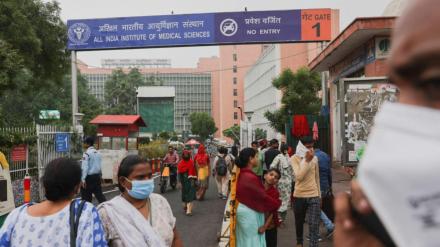Shortage of faculty, ghost professors and high attrition seem to be taking a toll on the medical education in the country. Medical colleges in India are facing acute faculty crunch with nearly 40-45% of the seats lying vacant, according to people privy to the state of affairs. Even in cases where the colleges are reporting sufficient faculty members to the National Medical Council (NMC) – the nodal agency to monitor medical colleges in the country – the actual numbers in most cases are quite low, the sources said, citing the situation in specific institutions.
The staff crunch could pose a challenge to the Prime Minister Narendra Modi’s plan to boost the number of medical seats. During his Independent Day address to the nation, Modi said that the central government will create 75,000 new medical seats over the next five years in a move to augment the country’s healthcare infrastructure.
“The reality is much different from what’s being shown. The problem of ghost faculty is rampant, and the biometrics attendance system is being rigged across colleges. Despite the (existence of) NMC, there are currently no checks on the medical colleges,” said Sharad Kumar Agarwal, immediate past national president, Indian Medical Association (IMA).
The faculty shortage problem was flagged by the health ministry in August last year when Parliament was told that about 2,161 faculty positions in all AIIMS are vacant as against the sanctioned strength of 5,527. The situation in the premier institutes was no different with AIIMS, New Delhi reporting 28% (or 347 vacant positions) shortfall against sanctioned faculty strength. “Due to the government‘s recent efforts to increase the number of medical colleges and the number of undergraduate and post-graduate seats have resulted in an alarming shortage of faculty members in Indian medical colleges,” noted a standing committee report in February 2024.
Experts said that the appointment of faculty has not kept up pace with the addition in seats over the years. “While the idea to add more seats is the need of the hour, but before adding new seats, the government must focus on improving the existing colleges. Most of the government and private colleges are not in a good shape,” said member of a medical students’ association, on condition of anonymity.
“We welcome the step of increasing seats, however, the broader issue is not just about increasing the numbers but to focus on the quality of the institutes,” said Manish Jangra, founder, Federation of All India Medical Association.
Agarwal said that the shortage of faculty can be attributed to the low salaries offered at both the private and government colleges. “There are also concerns around lack of inspection from NMC to see whether the colleges are fulfilling the minimum standard requirement regulations,” he said.
To be fair, last December, the NMC reportedly issued show cause notices to 349 medical colleges, including 197 government-aided institutes, for not following its norms pertaining to lapses in the attendance of faculty and keeping a faculty count lower than required.
